本文由 estudi08014 授权mooool发表,欢迎转发,禁止以mooool编辑版本转载。
Thanks estudi08014 for authorizing the publication of the project on mooool, Text description provided by estudi08014.
estudi08014:我们对连接了Sallent和Cabrianes两个城镇的道路景观进行更新提升,希望它能像以前一样生机勃勃。本项目处于这条道路更新计划的第一阶段,这条路沿着Llobregat河延伸,路的两侧环绕着河岸树林和小果园。
estudi08014: To develop and improve something, especially by making it as good or successful as it was before. This project is the first stage of regeneration of an old path that links the towns of Sallent and Cabrianes following the course of the Llobregat River, in an environment of riverside forests and small orchards.


就像任何再生过程一样,本项目也可以用三个连续的时间段来阐释:过去——道路及其边缘定义了一个易于通达且完美融入周围环境的开放空间系统;现在——这条道路已经变得拥挤,存在严重的可达性问题,从而割裂了这片土地;未来——想象并预测它可以回到过去的状态(不止于字面意义)。
This project, like any regeneration process, can be explained in 3 successive times: a past time where the path and its edges defined a system of open spaces, easily accessible, perfectly integrated into their environment. A present time where the path is transformed into a heavy traffic road, with serious problems of accessibility, which rips the territory. A future time, imagined and projected as a -not literal- back to the past time.
▼过去-现在 Past- Present

▼更新后的道路 After regeneration
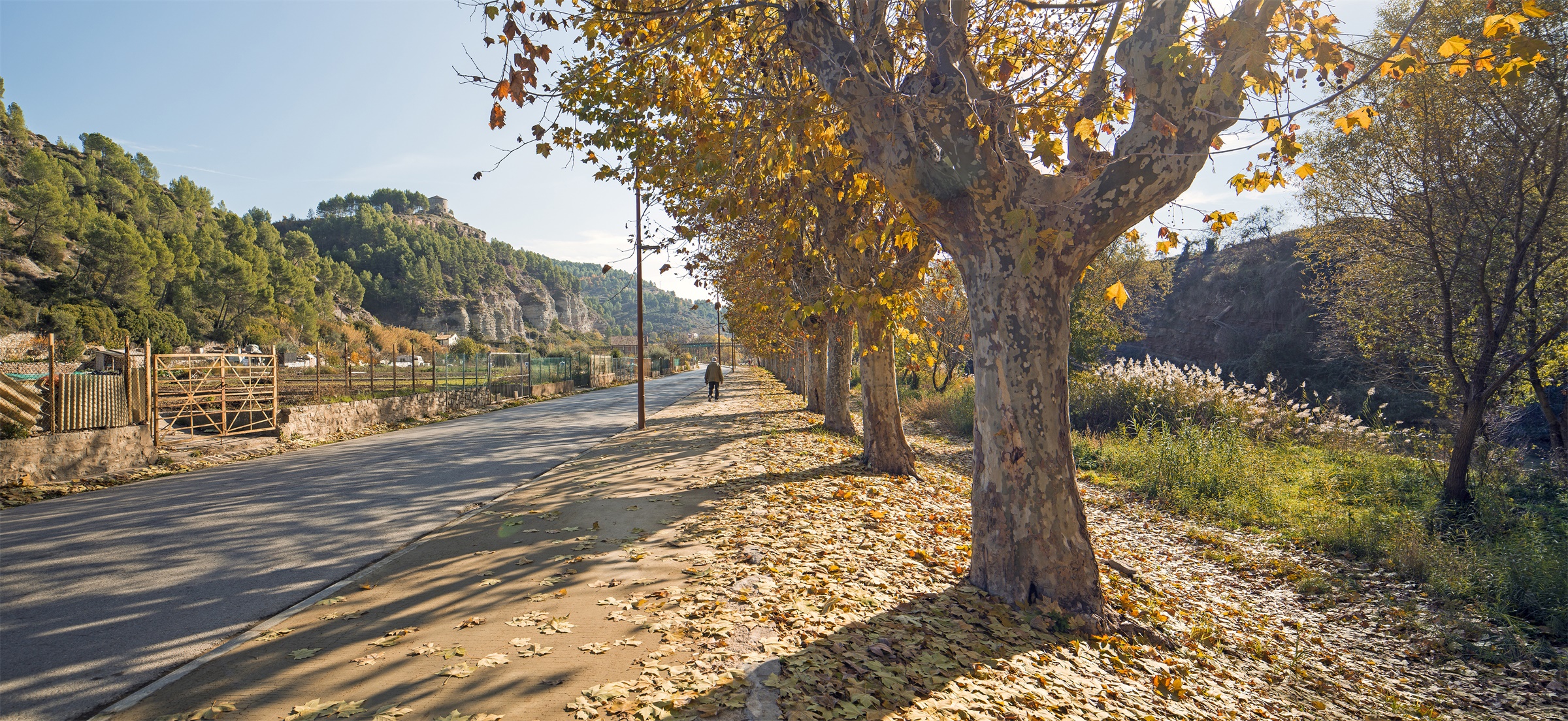
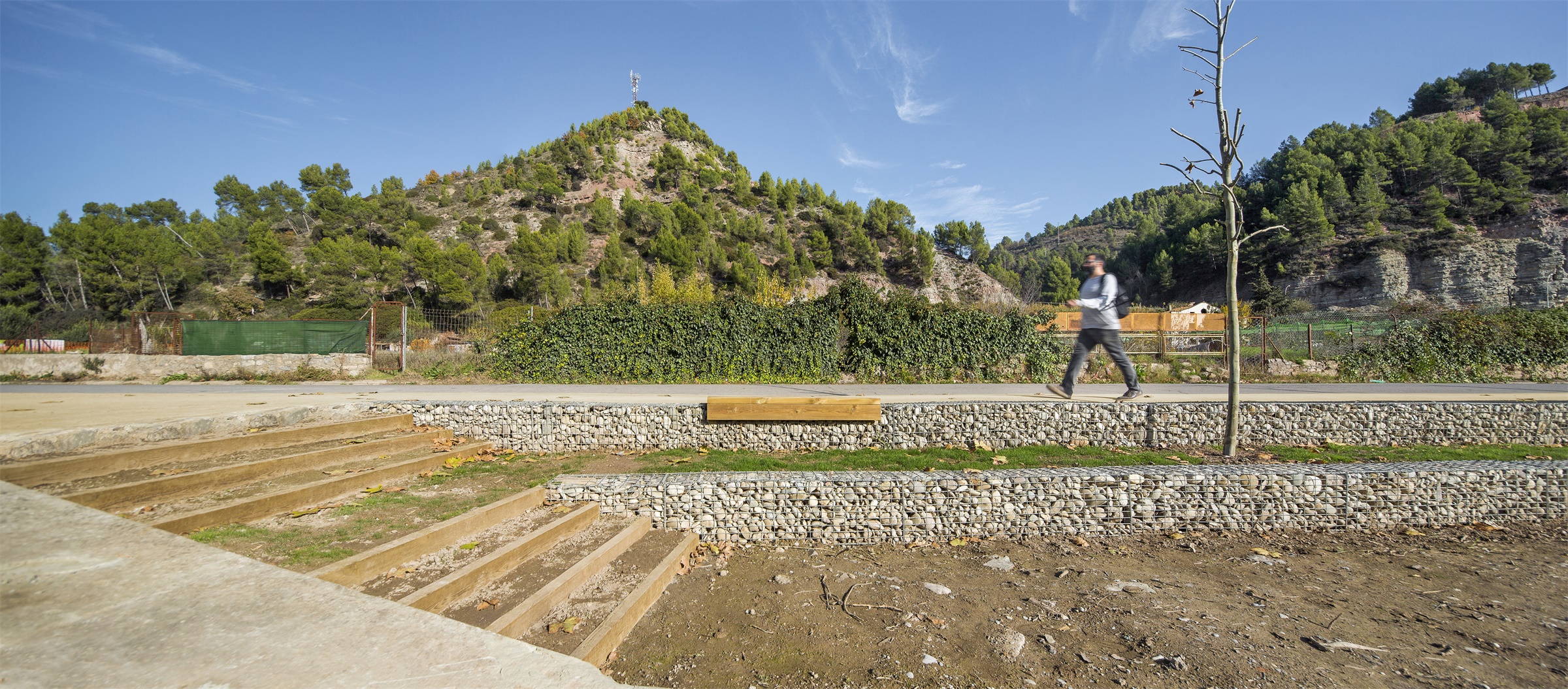

去结构化 A de-construction process
道路的更新是一个去结构化的过程:通过拆除将基础设施与景观界定得过于清晰的混凝土护栏,打开景观之门,使道路与周围景观充分联系。
This project is a de-construction process: to open the door to the landscape through the demolition of a concrete balustrade that defined an overly explicit boundary between infrastructure and landscape.
▼拆除混凝土护栏前后对比 Demolish concrete balustrade-before and after
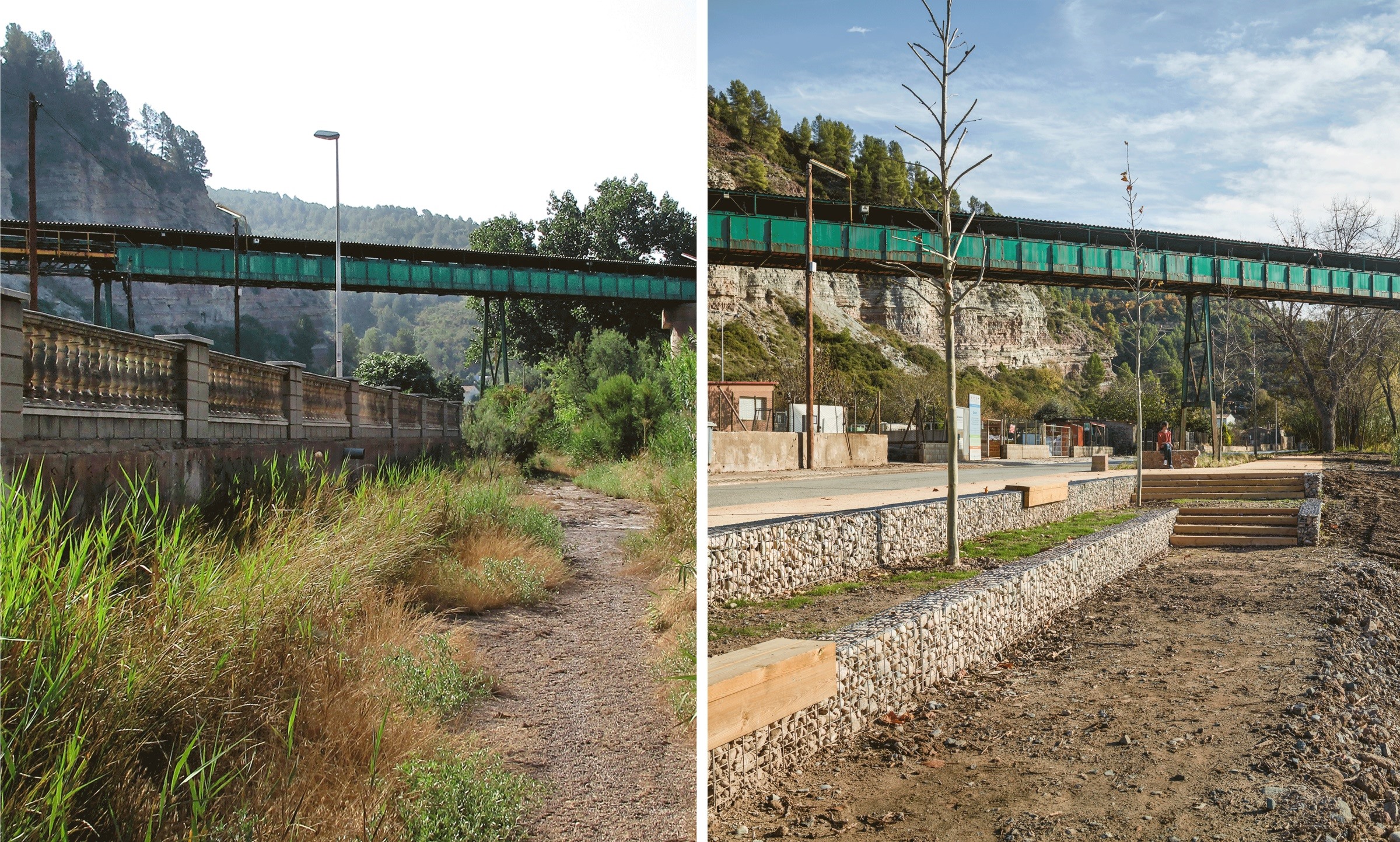
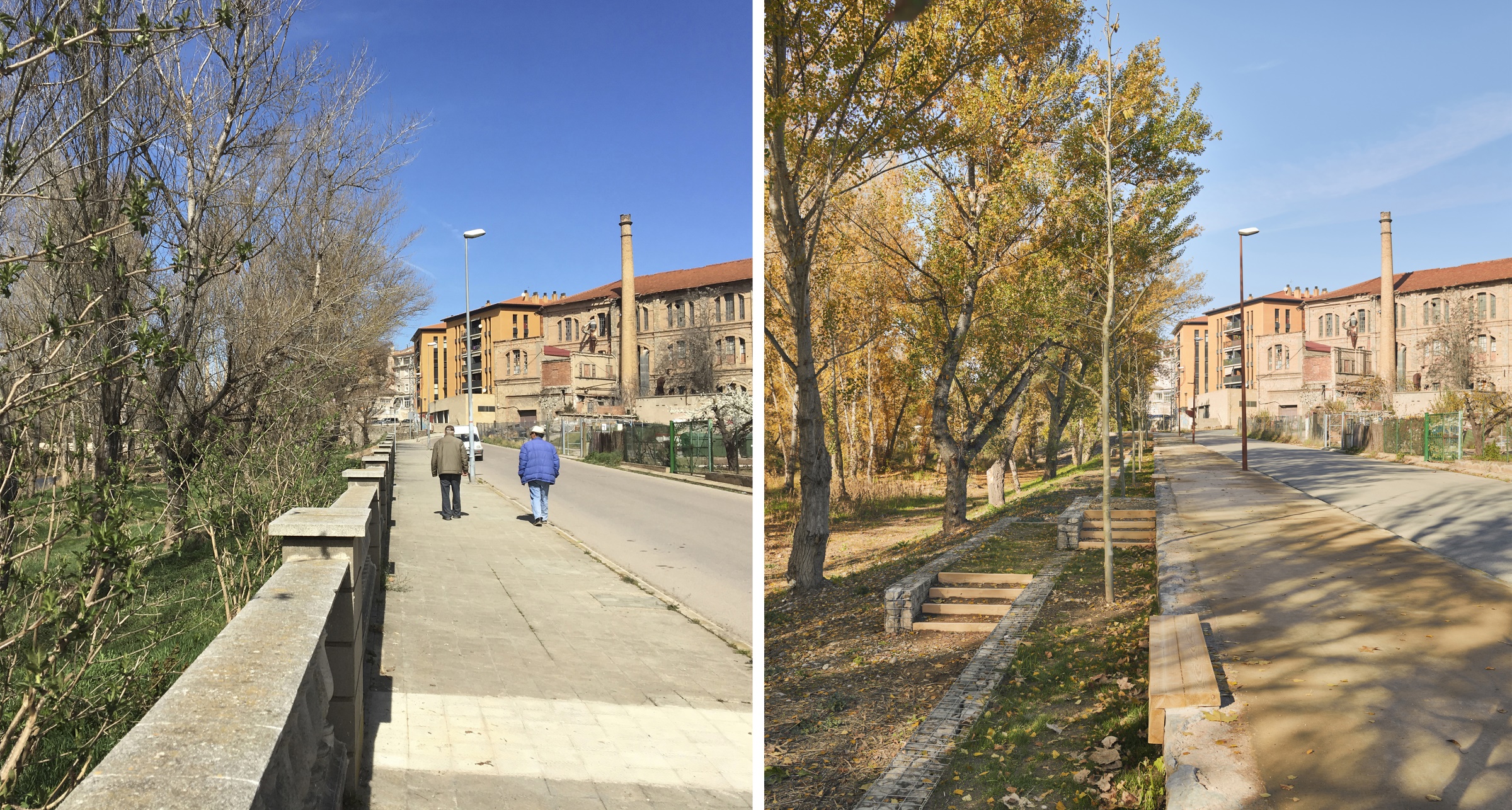

去物质化 A de-materialization process
同时,这也是一个去物质化的过程:使用当地生产的低影响资源来重新整合建筑和环境。
A de-materialization process: to reintegrate architecture and environment through the use of local and low impact resources.
▼当地低影响资源 Local and low impact resources
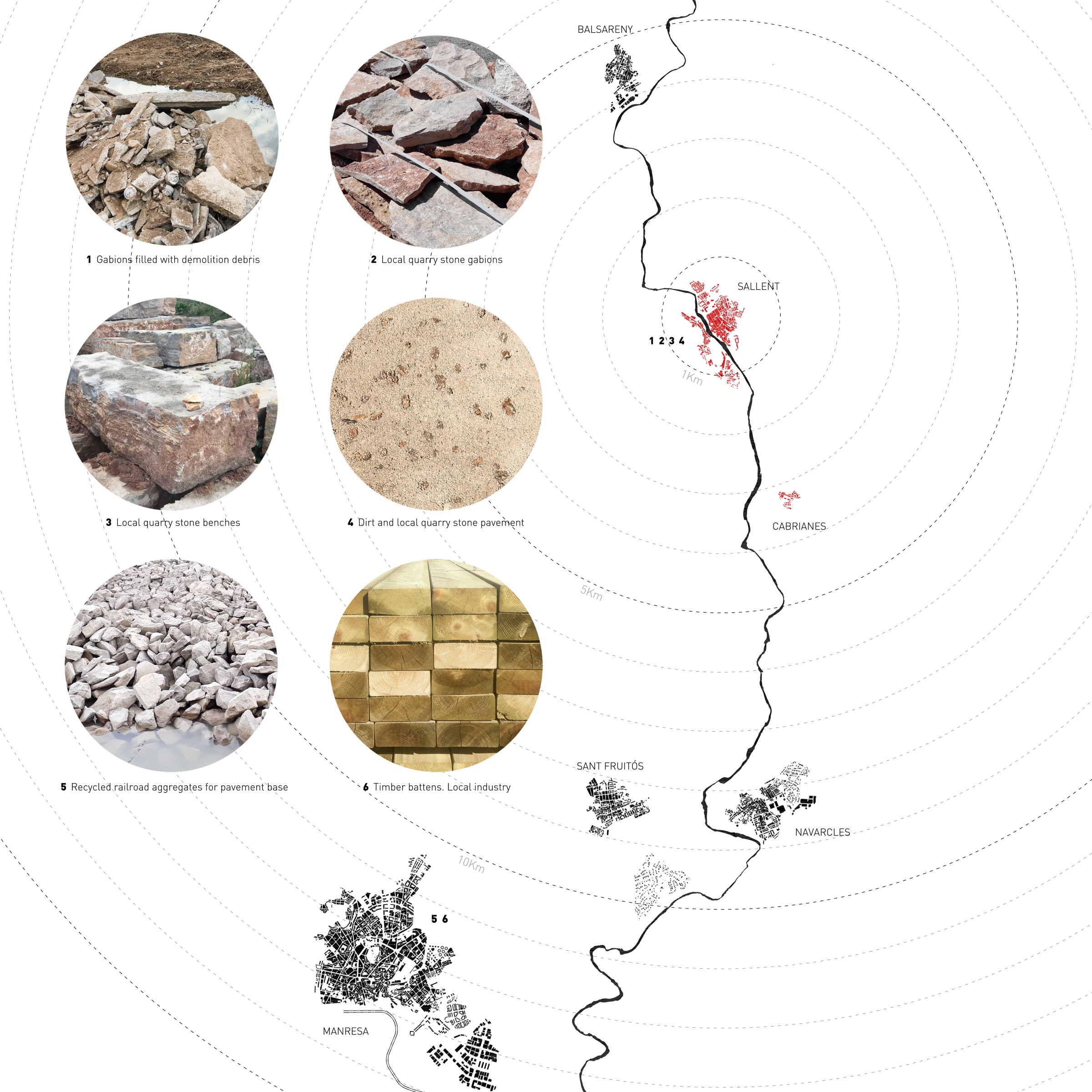
去隐匿化 An un-hiding process
最后是一个去隐匿化的过程:清理道路边缘,提供更多供人们使用的开放空间。
An un-hiding process: to provide access to the open spaces on the path edges by cleaning them.
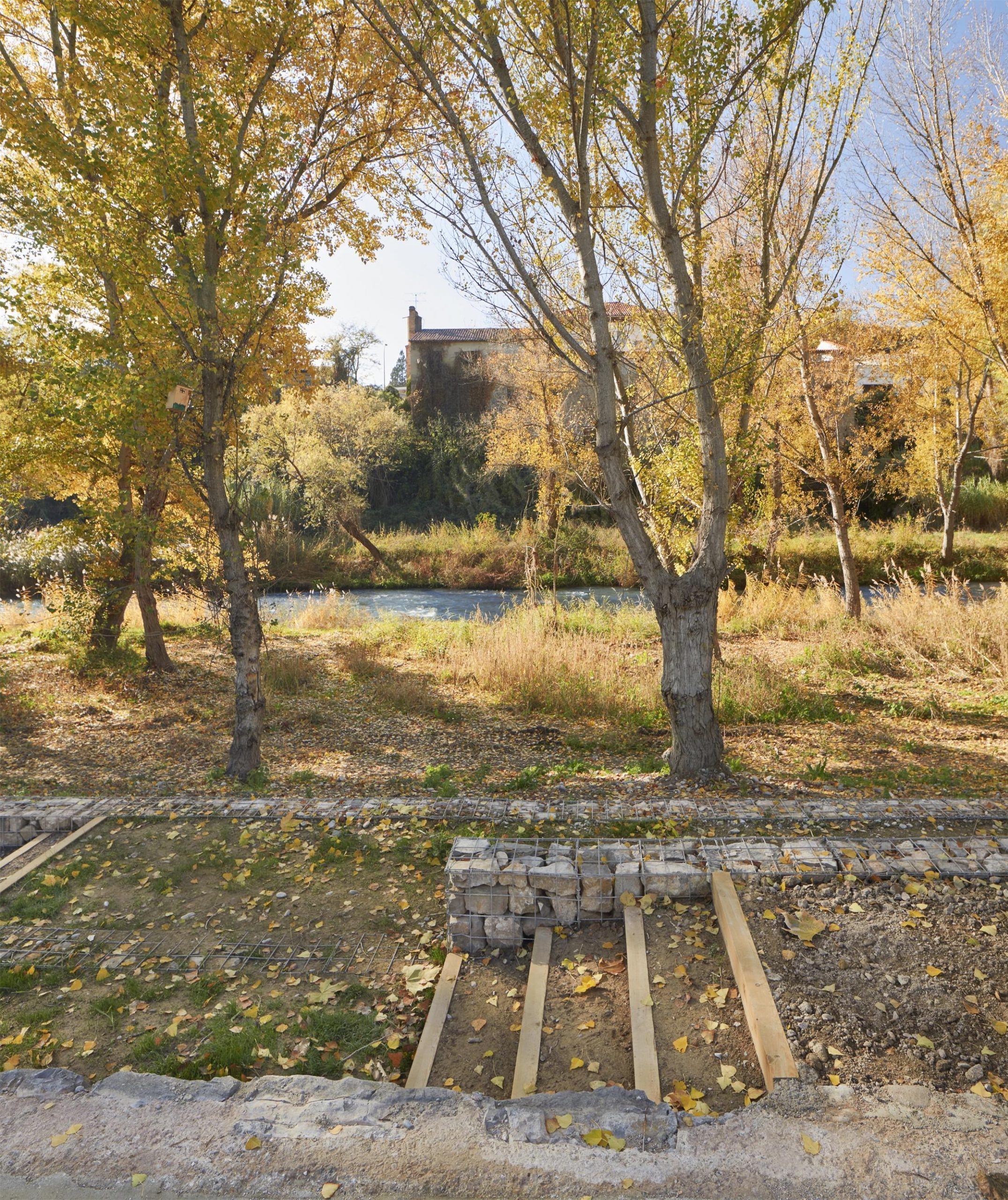
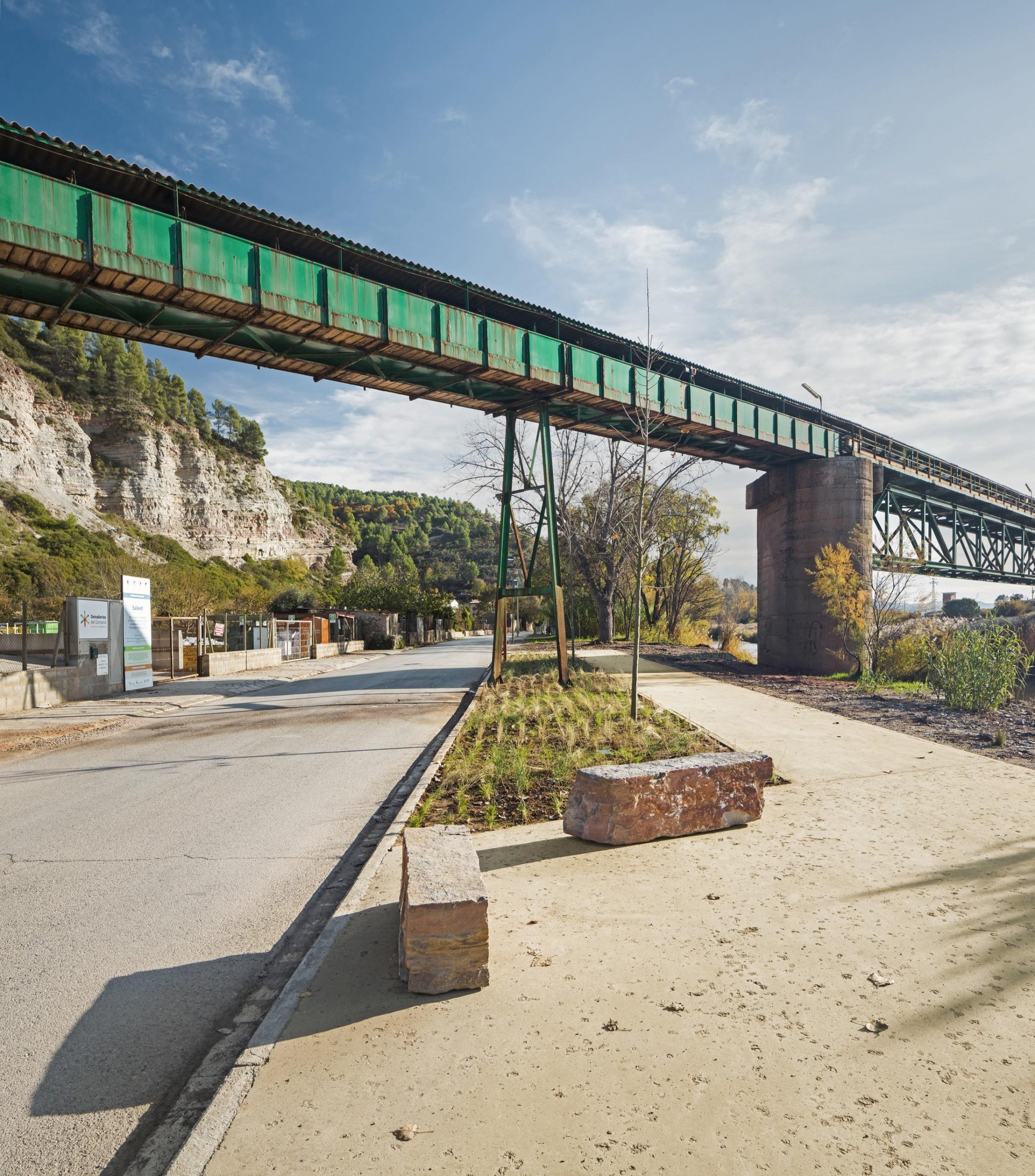
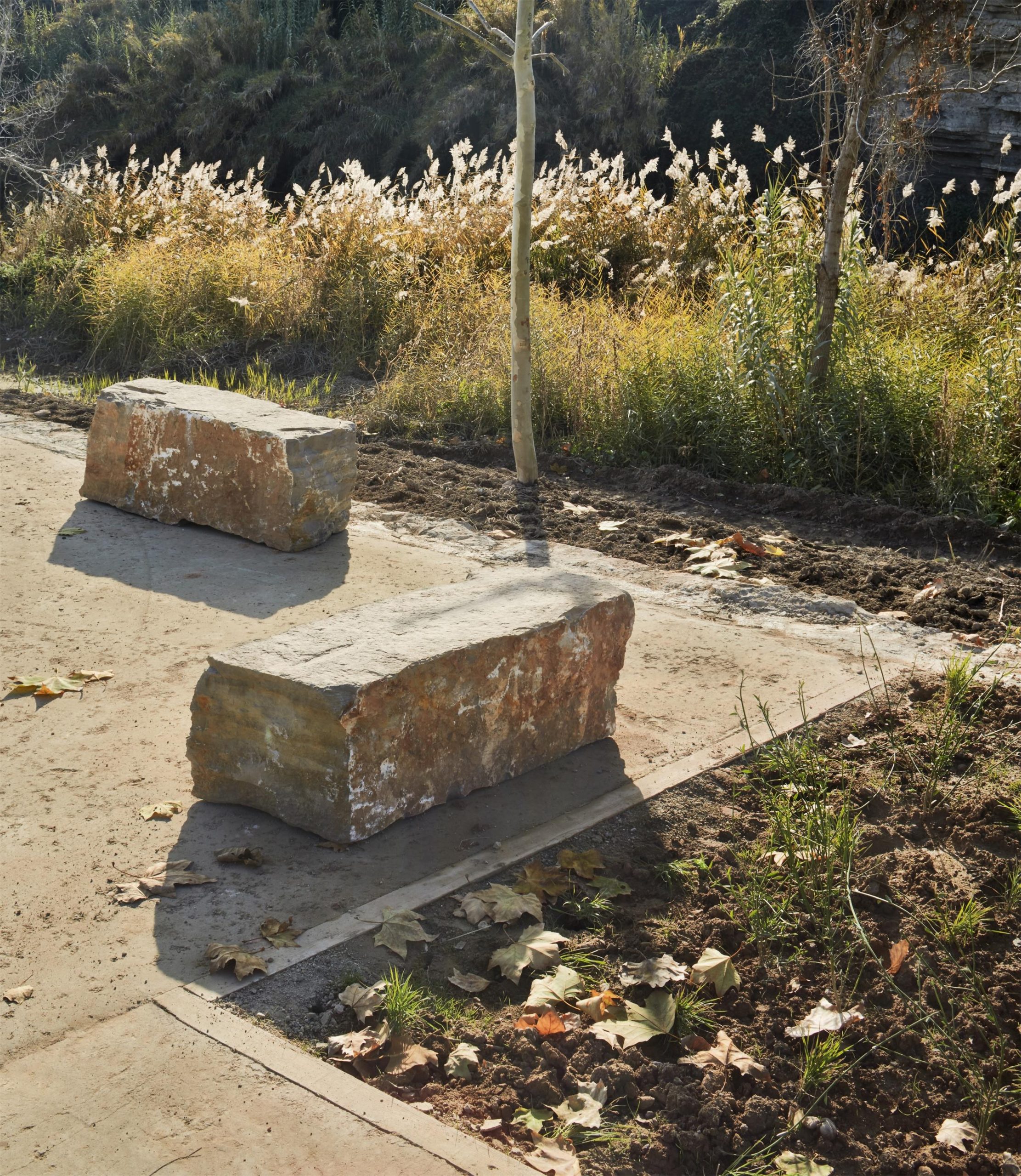
项目旨在通过重新布置阶梯、坡道和平台,重新利用河岸的自然区域,解决两个层级之间的连接问题;修复河岸步道及其边缘,使其成为市民的活动空间;在不断变化的环境中,通过低强度的干预,重新整合基础设施和自然环境的关系,这样很快就会形成自身规律,从而自动摆脱那些非关键性的元素。
This project aims the re-appropriation of the natural areas of the riverbank, through the arrangement of stairs, ramps and terraces that solve the connection between both levels; the re-habilitation of the riverbank promenade and its edges, becoming them into civic spaces; the re-integration of infrastructure and nature through a low-intensity intervention in a continuously changing environment that probably will soon impose its own law to get rid of the not fundamental.
▼重新布置阶梯、坡道和平台 The arrangement of stairs, ramps and terraces


▼修复河岸步道及其边缘 The re-habilitation of the riverbank promenade and its edges
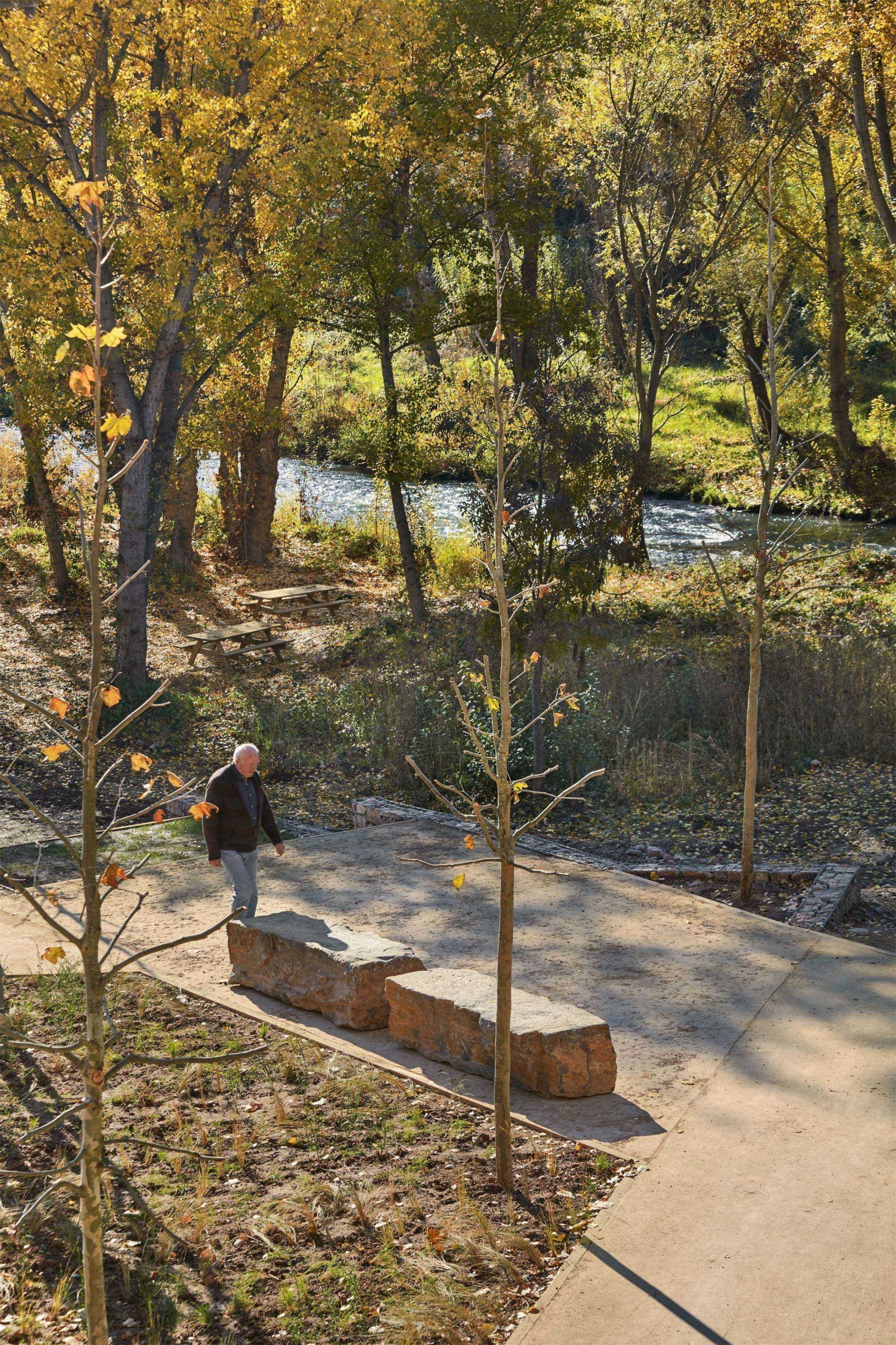
▼改造前后剖面 Section – previous state and proposal

▼改造前后轴测示意 Axon – previous state and proposal

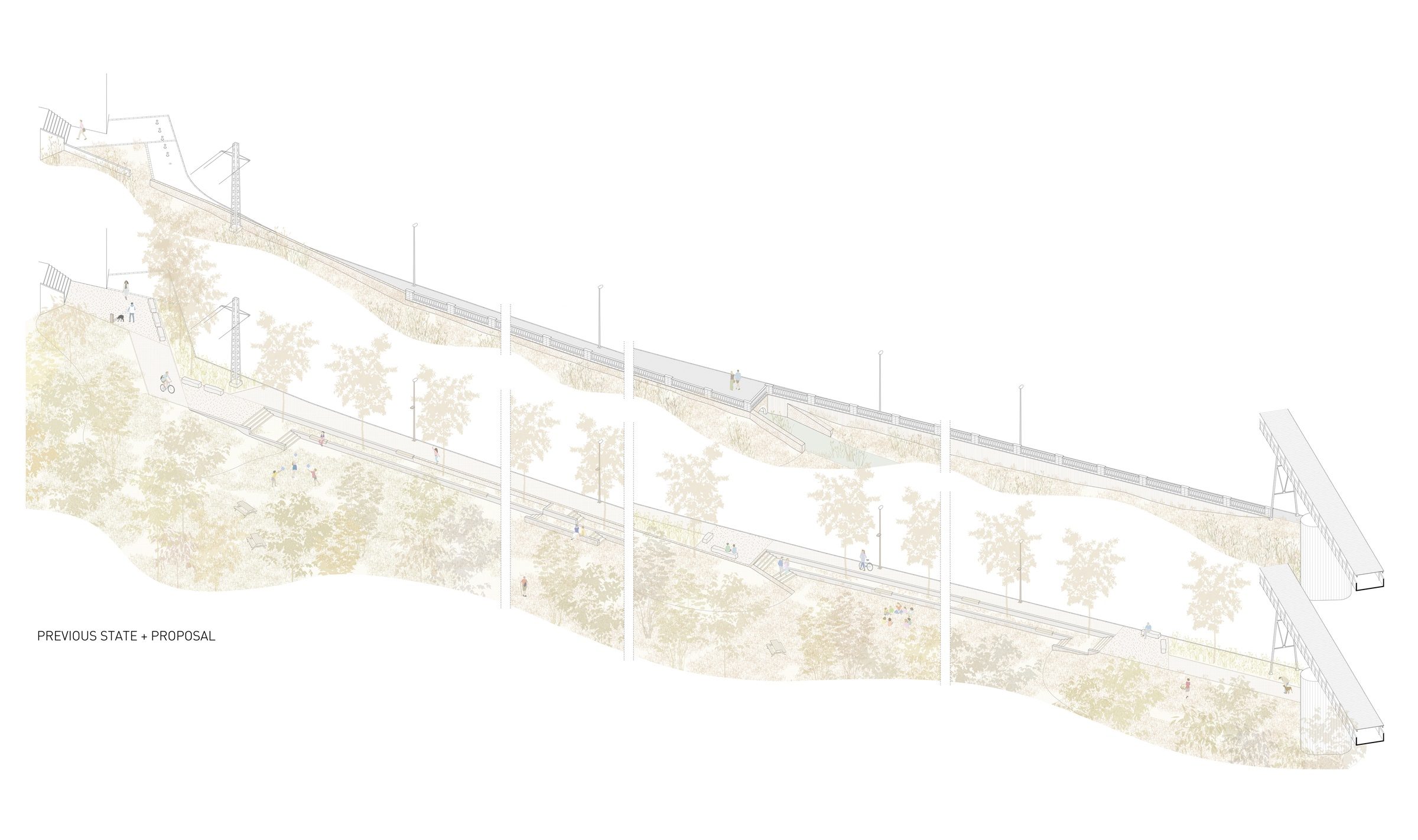
▼局部放大图:改造前后轴测示意 Detail view of axon – previous state and proposal

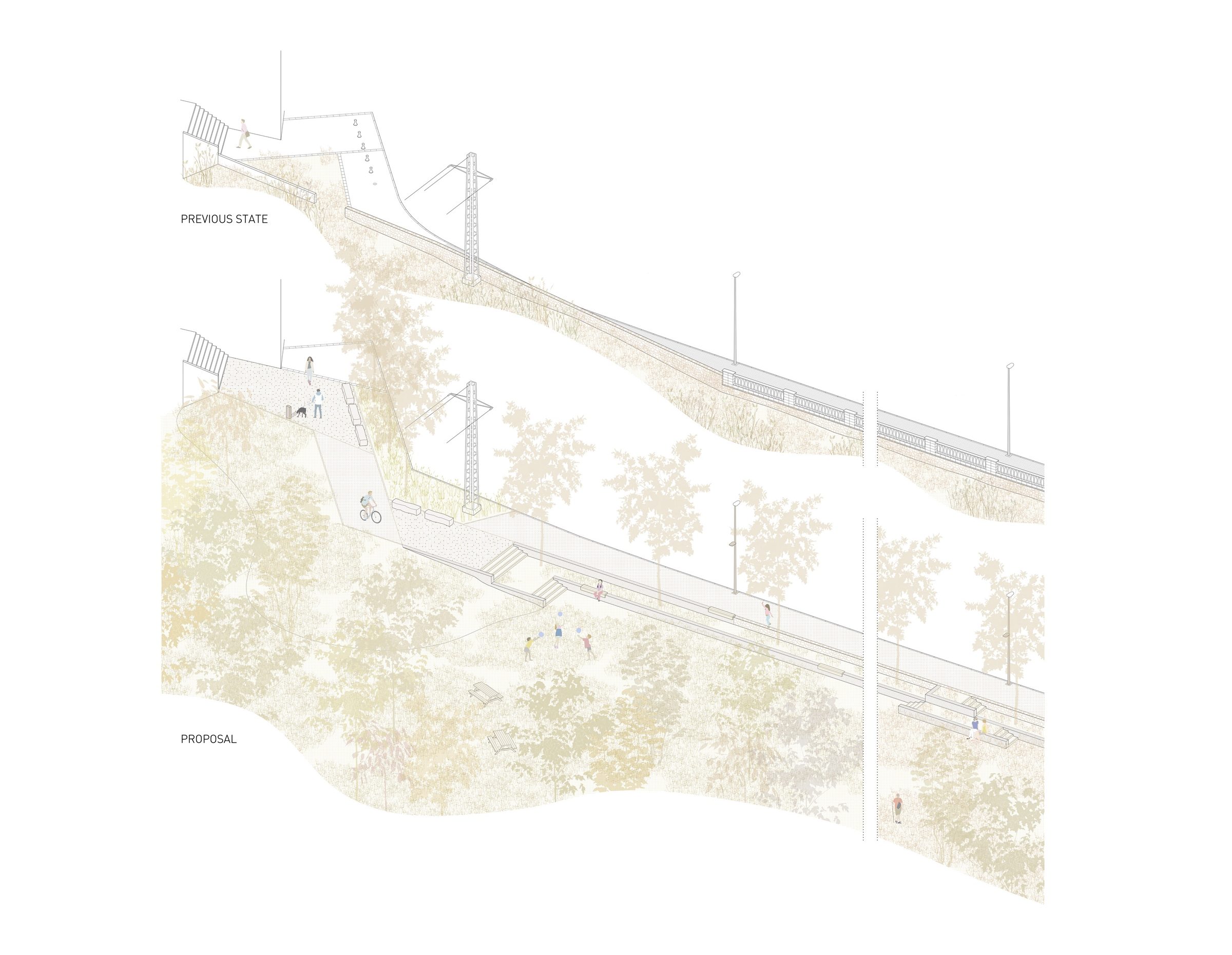
项目名称:CAMÍ DE CABRIANES景观再生
地点:西班牙萨伦特Camí de Cabrianes
景观/建筑公司:estudi08014
面积:30000平方米
预算:280000欧元
项目时间:2017年9月- 2018年10月
建造时间:2019年2月- 2019年12月
设计师:08014 arquitectura (Adrià Guardiet, Sandra Torres)
农业顾问:Roser Vives
测量和预算:Joan Olona
承包商:Excavacions Duocastella, S.L.
客户:Sallent City Council
摄影:Pol Viladoms
Project Name: LANDSCAPE REGENERATION OF CAMÍ DE CABRIANES
Site: Camí de Cabrianes, Sallent, Spain
Landscape/Architecture Firm: UnSangDong Architects
Surface: 30000sqm
Budget: 280000€
Project: September 2017 – October 2018
Construction: February 2019 – December 2019
Authors: 08014 arquitectura (Adrià Guardiet, Sandra Torres)
Agronomy: Roser Vives
Measurements and budget: Joan Olona
Contractor: Excavacions Duocastella, S.L.
Client: Sallent City Council
Photos: Pol Viladoms
审稿编辑 HOU
更多Read more about: estudi08014








0 Comments